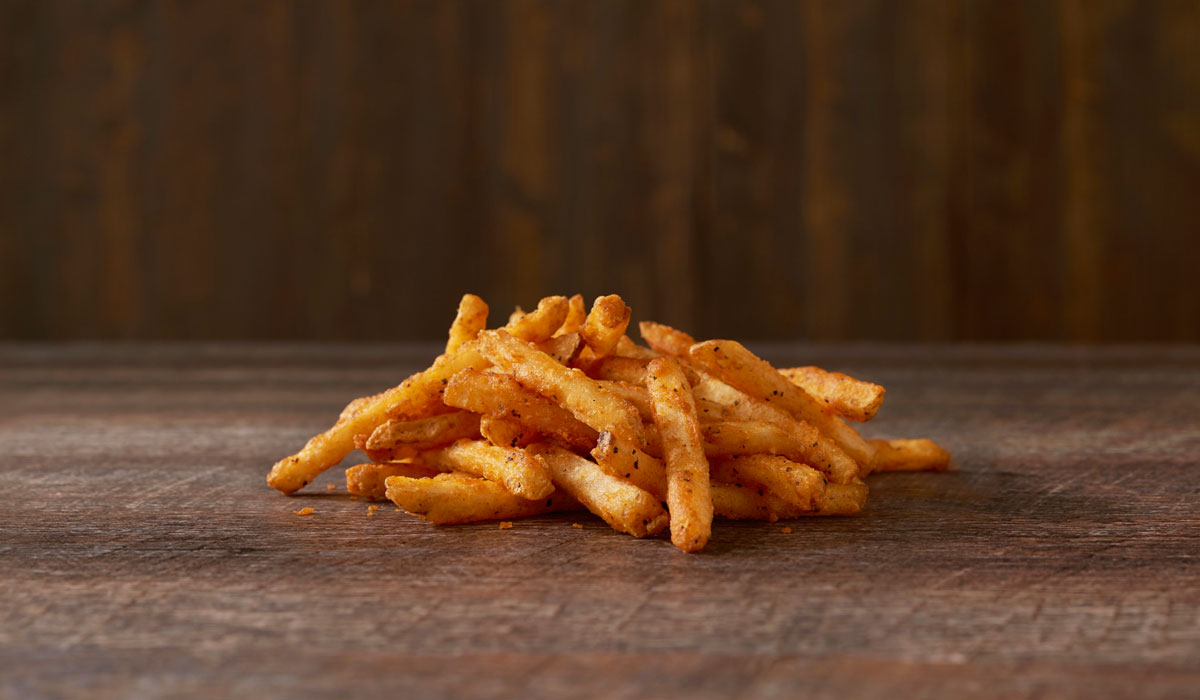Checkers & Rally’s chief marketing officer Terri Snyder admits the burger chain was late to the delivery party. But they’re definitely making an entrance.
On March 20, the company announced the launch of its new delivery platform, one it’s calling, “the most comprehensive and franchisee-friendly” in all of quick service. The reason? Instead of launching with a major player, Checkers brought five national aggregators into the picture—UberEATs, DoorDash, Postmates, Grubhub, and Amazon Restaurants. Additionally, Checkers did so under a single point-of-sale system built with its operators in mind. Olo designed the integration to give franchisees a profitable and seamless way to fulfill orders, the company said. Put simply, it’s a far cry from the multi-tablet nightmare many chains face in the back of the house. There isn’t one to be found in this setup.
“We felt like being late to the party was the right way to go for us,” Snyder says, “if the reason was achieving this idea of being the most franchise friendly, operator friendly approach to delivery, this was the way to go—something that really pays off once you roll it out.”
Checkers had just one restaurant delivering about a year ago. Now, there are 336 locations live with plans to roll out to the entire 900-unit system by year’s end.
The chain’s main goal was to eliminate the delivery structure where franchisees try to individually manage and coordinate third-party business with multiple providers. Checkers centralized the business model and built a delivery support team that offers operators a single point of contact, including help with contract negotiations, technology support, training, and menu management.
Snyder says the company has three people working full time to aid franchisees with delivery. “We have a long-term support structure,” she says.
“I’m really proud of how we attacked this,” Snyder adds. “I think we’ve set ourselves up for success, operationally and financially.”
Olo CEO and founder Noah Glass said in a statement, “we embraced their innovative and collaborative approach, working with them to create one of the deepest and easiest systems in the restaurant industry.”
Snyder says Checkers realized it couldn’t deliver on some of its brand promises if it took a more traditional route. Serving food in less than 3 minutes? No chance, she says, with employees reentering tablet orders into the POS. Getting orders accurate? Also risky under that setup.
After customer satisfaction, though, Checkers had to make the process financially viable, she says. One way to achieve that was to engage multiple partners, including Amazon Restaurants. Checkers is one of the first national quick-service players to team up with the retail giant.
The second note was trying to take as much labor out of the equation as possible. That’s where the POS unification comes into focus. The orders stream right into the system and are handled like anything else. There’s no added step, just added volume.
Next was the menu and making sure Checkers put the best options up for guests. As Snyder says of delivery, “This isn’t a value occasion. This is a convenience occasion.”
Checkers didn’t put all of its value options up, which has led to a significantly higher check, she says. And the delivery items carry a different price to cover what’s left of the fee, which helps guard margins at the operator level. The consumer is essentially covering the delivery charge Checkers negotiated with vendors.
Checkers’ POS unification began, in earnest, a couple of years ago as the company looked ahead to future changes. It wanted a common platform to onboard loyalty, order-ahead, delivery, and other tech-driven initiatives. “It’s really part of a broader ecommerce initiative that we have across our business,” she says.
Snyder says delivery appears to be largely incremental in the early stages. Compared to some industry peers, like McDonald’s, which sees incrementality around 70 percent, she says Checkers is tracking even higher.
About 70 percent of the orders are coming in the evening, she says. It’s strong late night, and most effective in trade areas that tend to over-index for delivery—college, university, urban, major cities.
“While some of the biggest brands in [quick service] have committed to a single delivery service, we wanted to give Checkers & Rally’s guests more ways to bring our amazing burgers, famous seasoned fries and exciting flavors to their front doors,” Rick Silva, president and CEO, said in a statement. “At the same time, we wanted to provide our franchisee community with a fully integrated platform that would make it easy and profitable to fulfill delivery orders. It’s a perfect way to satisfy both our guests and our franchisees.”
From a broad perspective, Snyder says, there’s still “enormous organic growth,” left in delivery for restaurants. “I think if you look at the penetration of restaurants that are using it, at the marketplaces, it’s still relatively small,” she says.
What it boils down to is an evolving generation of customers. Historically, if you didn’t feel like leaving the house, Chinese food or pizza were the only solid options. But for a generation that demands convenience and diversity, they now have endless options. “They want what they want, when they want it, the way they want it,” she says. “And they’re used to having that level of customization.”
“So I think it’s going to get bigger and bigger and bigger,” Snyder adds, “and I think it will remain incremental for some time because these delivery orders aren’t occasions that you’re going to put your shoes on to go out for.”
Quick service in particular has a chance to thrive because, already, many of the occasions the industry serves are spontaneous ones. Delivery tends to fall under that umbrella as well.
“I don’t see it slowing down anytime soon,” she says.









